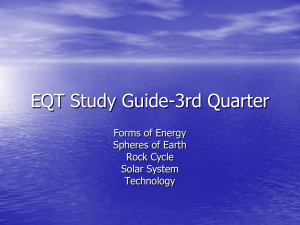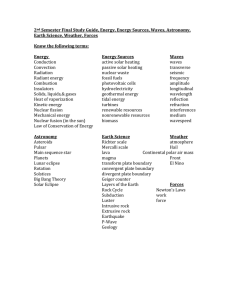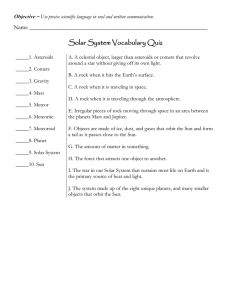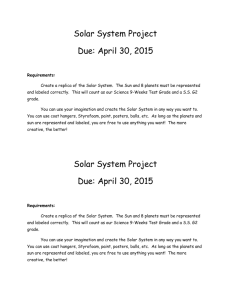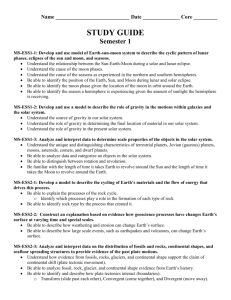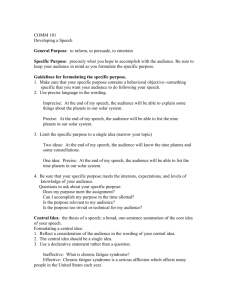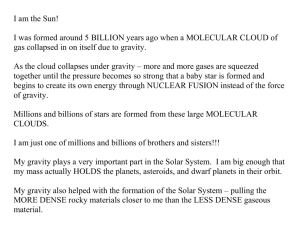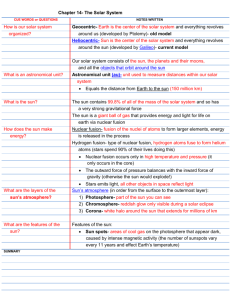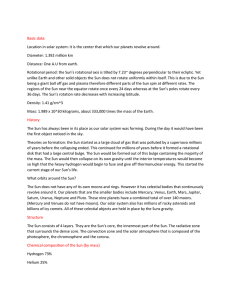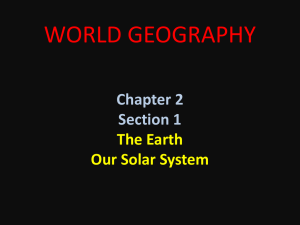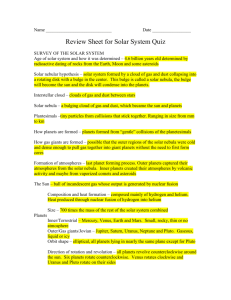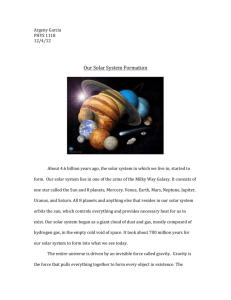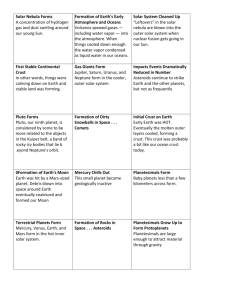Astronomy & Earth Science Review
advertisement
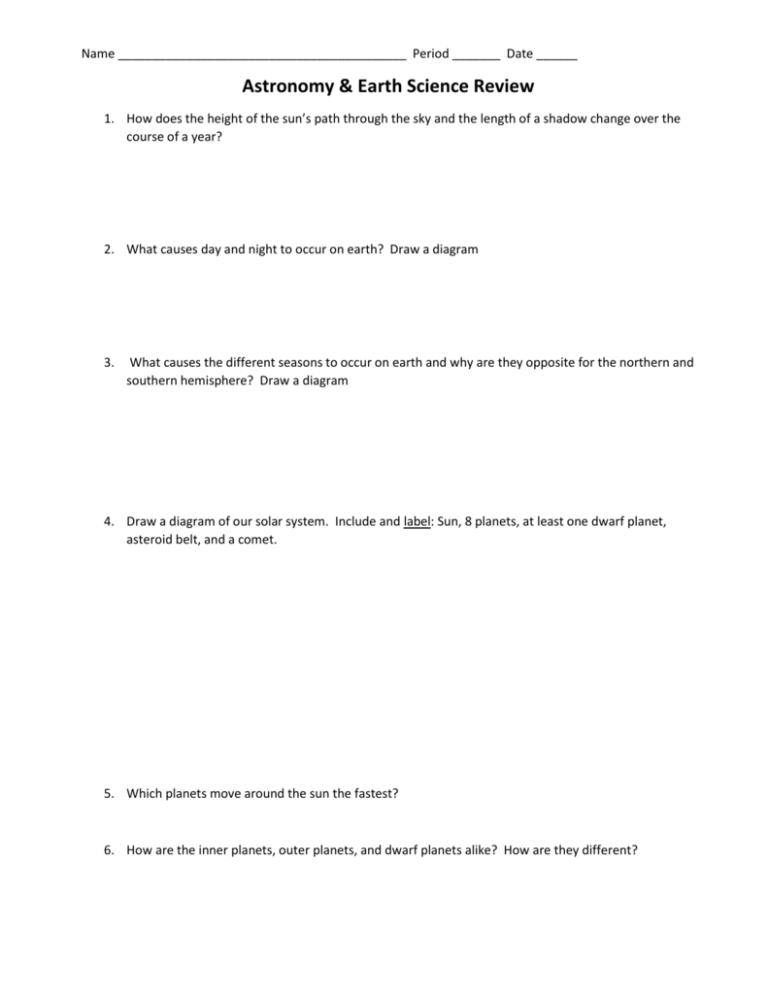
Name __________________________________________ Period _______ Date ______ Astronomy & Earth Science Review 1. How does the height of the sun’s path through the sky and the length of a shadow change over the course of a year? 2. What causes day and night to occur on earth? Draw a diagram 3. What causes the different seasons to occur on earth and why are they opposite for the northern and southern hemisphere? Draw a diagram 4. Draw a diagram of our solar system. Include and label: Sun, 8 planets, at least one dwarf planet, asteroid belt, and a comet. 5. Which planets move around the sun the fastest? 6. How are the inner planets, outer planets, and dwarf planets alike? How are they different? 7. What objects in our solar system have a lot of gravitational pull? Why? 8. What objects in our solar system have a little bit of gravitational pull? Why? 9. What happens to gravitational pull as you get closer to the object? 10. What force keeps all objects in place in our solar system? 11. What is direct light and indirect light? When does NJ see these types of light and why? 12. Describe the difference between rotation and revolution? How long does each one take on Earth to occur? 13. How is a magnetic field a benefit to the earth? How is it made? 14. How are the earth, moon and sun arranged to allow for a solar eclipse? 15. How are the earth, moon and sun arranged to allow for a lunar eclipse? 16. In rock layers, which rock is the oldest? Which is the youngest? 17. Which events occur suddenly (S) and which ones take more time to occur (L) Earthquakes _______ volcanic eruptions ______ Mountain range formation _______ Ocean formation ______ tsunami _______ Continental drift _______ 18. What is weathering? Give examples. 19. What is erosion? Give examples. 20. How can erosion be prevented? 21. Early organisms found on Earth were probably very __________ (simple or complex) Explain. 22. Draw the five stages of the rock cycle and explain each process (arrow) that allows a rock to change form. 23. What type of rock is most likely to contain fossils? Explain. 24. What are the four parts of soil and how does it form? 25. What is the Ring of Fire and how did it form? 26. Where are earthquakes and volcanoes most likely to occur and why? 27. What are the four layers of earth? 28. What evidence supports the theory of continental drift (four pieces of evidence)? 29. What three types of plate boundaries are there? Name and describe them. 30. What makes the plates on the crust move? Explain this picture. 31. Is the magnetic north pole the same thing as the geographic north pole? Explain

